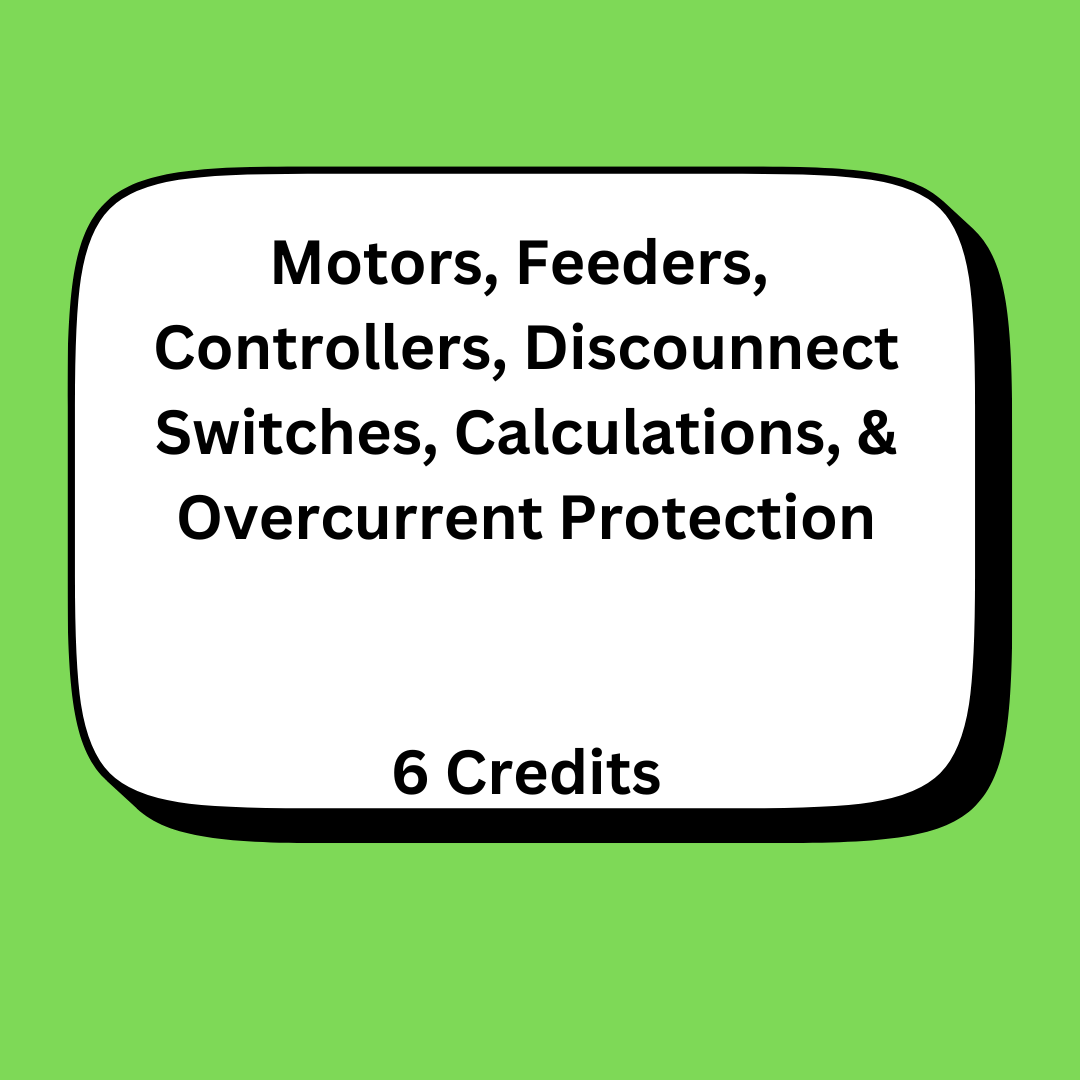Motors, Feeders, Controllers, Disconnect Switches, Calculations, and Overcurrent Protection
Attend this program in Person at our school or as a LIVE INTERACTIVE WEBINAR:
6 CEU’s all in one day
Course Description:
This comprehensive course covers the operation, protection, and control of electric motors with a focus on compliance with the National Electrical Code (NEC). Students will study the causes of motor burnouts, voltage unbalance, overloads, and environmental factors that impact motor life. Emphasis is placed on NEC Article 430 requirements for motor circuits, overload protection, ampacity, short-circuit protection, and proper selection of protective devices.
The course also explores the NEC rules governing protection of conductors, including branch-circuit, feeder, service, and transformer secondary conductors. Participants will learn how to apply code definitions and requirements for overcurrent protection, flexible cords, thermal devices, and ground-fault protection.
In addition, students will examine modern applications of motor control using programmable logic controllers (PLCs) and variable frequency drives (VFDs). Through schematic analysis and practical examples, participants will bridge the gap between hardwired motor control systems and programmable automation technologies.
Designed for electricians, electrical contractors, and maintenance professionals, this program enhances understanding of both traditional and advanced motor control systems while reinforcing NEC compliance and safe electrical design practices.
Learning Objectives:
Upon completion of this course, participants will be able to:
Motor Operation and Protection
-
Identify common causes of motor burnouts including voltage unbalance, overload, restricted ventilation, and improper maintenance.
-
Determine voltage unbalance and temperature rise for both general- and special-purpose motors.
-
Apply NEC Article 430 to properly size motor overloads and determine ampacity.
-
Select and apply appropriate overcurrent protective devices (OCPDs) using NEC Tables 430.247–430.250 and 430.52.
-
Interpret motor circuit requirements, including locked rotor current, standard ampere ratings, and circuit protection methods.
Conductor and System Protection
-
Explain key NEC definitions related to the protection of conductors and electrical systems.
-
Apply NEC requirements for overcurrent protection of power conductors rated 800 amperes or less and over 800 amperes.
-
Identify protection rules for tap conductors, transformer secondary conductors, and feeder taps.
-
Distinguish between protection methods for flexible cords, fixture wires, and flexible cables.
-
Describe the proper use of fuses, circuit breakers, and thermal devices for system coordination and supplementary protection.
-
Explain ground-fault protection of equipment and requirements for ungrounded and grounded conductors.
-
Apply NEC standards for branch-circuit, feeder, service, busway, motor circuit, and generator conductors.
-
Recognize code requirements for changes in conductor size and proper con
Requirements to attend a live webinar:
You will need a smartphone, tablet, laptop or desktop computer to view it. If using a smartphone or tablet, it is best to have the app for the program on your device (i.e. Zoom, GoToWebinar).
To verify your continued attendance during the class, you will need a microphone, webcam or the ability to type into the program’s live chat.
Instructors or school personnel will take attendance periodically throughout the class.
Instructors may call on participants.
To verify attendance, a code word may be given sometime during the class.
You will be required to complete and return an evaluation after the course has ended. The evaluation may ask what code word was given.
You may not receive your Certificate of Completion if we cannot verify your attendance.
Webinar invitations are emailed to registered students approximately one day prior to the class.
Certificates of Completion are emailed to students approximately 5 business days after the course for those attending as a Li






